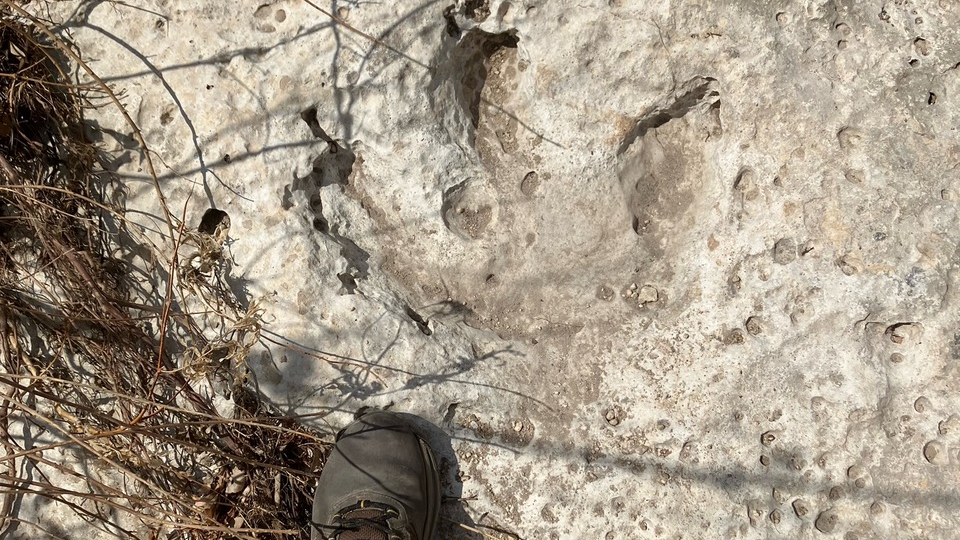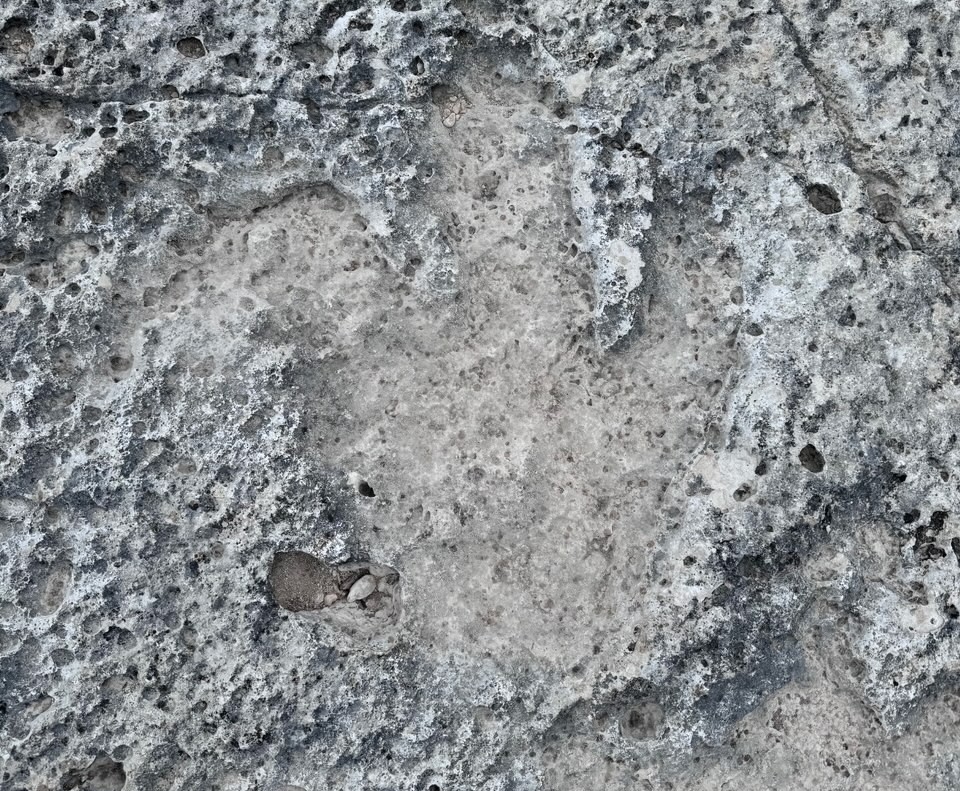115 million-year-old dinosaur tracks unearthed in Texas after devastating floods
While clearing debris from the devastating floods in Texas in July, volunteers uncovered 15 large dinosaur footprints thought to belong to a formidable prehistoric predator.

Floodwater in Texas has uncovered 15 dinosaur footprints dating to 115 million years ago, researchers say.
The prints were discovered in northwest Travis County by volunteers who were helping to clear up debris from the devastating floods that hit the region in July, Travis County judge Andy Brown, the county’s chief executive, told ABC News. The three-clawed prints — each measuring roughly 18 to 20 inches (46 to 51 centimeters) in length — were then confirmed by paleontologist Matthew Brown on Aug. 5.
"The tracks that are unambiguously dinosaurs were left by meat-eating dinosaurs similar to Acrocanthosaurus, a roughly 35-foot-long (11-meter) bipedal carnivore," Brown, who is the director of vertebrate paleontology at the University of Texas at Austin, told CNN.
Acrocanthosaurus lived during the early Cretaceous period, between 115 million and 105 million years ago and is thought to have been the largest predator in what is now North America at the time, according to the North Carolina Museum of Natural Sciences. These carnivorous dinosaurs looked similar to the later Tyrannosaurus rex and reached similar lengths, although T. rex was significantly taller and heavier.
The tracks are laid out in a criss-cross pattern and may have been made by multiple dinosaurs moving together as a group.
"We aim to return to these sites and document tracks both new and old," Brown told Live Science in an email. "There are new and more precise technologies available to us now than existed in the early 1990s when these sites were last studied, and we can potentially use drones and surface scans to make 3D models of the trackways to better understand them."
Related: A brief history of dinosaurs
Get the world’s most fascinating discoveries delivered straight to your inbox.

Brown hopes that this additional data might tell us more about the dinosaurs' behavior, anatomy and how they moved.
Waterways like Sandy Creek, where the prints were discovered, cut through a layer of rock called the Glen Rose Formation, which is roughly 110 million years old. "That's how we know how old the dinosaur tracks are," Brown said. "It's because they're preserved in rock layers that are that old."
Travis County lies roughly 200 miles (320 kilometers) south of Dinosaur Valley State Park, which is known for its well-preserved dinosaur footprints. Brown said it was fairly common to find dinosaur tracks in central Texas.
"Fossilized dinosaur footprints are relatively common in Travis County, in fact researchers from the University of Texas have documented tracks in this area of Sandy Creek in the past, in addition to the discovery of new tracks along the banks of the creek exposed during this historic storm," he said.
Dinosaurs roamed throughout what is now Texas during the Mesozoic Era (252 million to 66 million years ago), but the majority of footprints and fossils unearthed in the state come from the Cretaceous period (144 to 66 million years ago), when the state was covered in soft mud and a shallow sea, according to Dinosaur Valley State Park.

Pandora is the trending news editor at Live Science. She is also a science presenter and previously worked as Senior Science and Health Reporter at Newsweek. Pandora holds a Biological Sciences degree from the University of Oxford, where she specialised in biochemistry and molecular biology.
You must confirm your public display name before commenting
Please logout and then login again, you will then be prompted to enter your display name.


